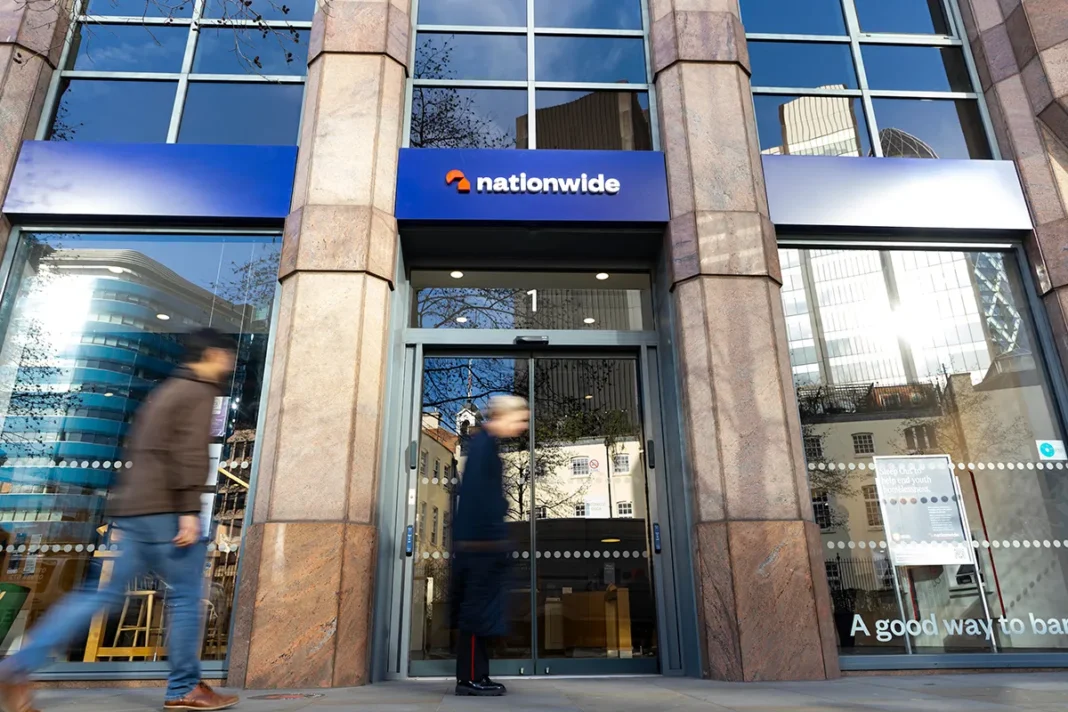Annual UK house price growth held steady at 2.2% in September, up marginally from 2.1% in August, according to the latest Nationwide index.
Prices rose by 0.5% month-on-month after seasonal adjustment, bringing the average house price to £271,995.
Robert Gardner, Nationwide’s chief economist, says the figures reflect a period of stability in the housing market despite higher borrowing costs.
And if the wider economic recovery holds, housing market activity is likely to “strengthen gradually” over the next year.
SEASONAL EFFECTS

Gardner says: “The annual pace of UK house price growth was little changed in September at 2.2%. Prices increased by 0.5% month on month, after taking account of seasonal effects.”
He adds that activity is also showing signs of steadiness with mortgage approvals for house purchases running at around 65,000 per month – close to the pre-pandemic average.
“Despite ongoing uncertainties in the global economy, underlying conditions for potential home buyers in the UK remain supportive,” Gardner adds. “
Unemployment is low, earnings are rising at a healthy pace, household balance sheets are strong and borrowing costs are likely to moderate a little further if Bank Rate is lowered in the coming quarters as we, and most other analysts, expect.”
REGIONAL TRENDS DIVERGE
The quarterly breakdown showed sharp regional contrasts. Northern Ireland remained the strongest performing market, with prices up 9.6% year-on-year in the three months to September. Wales saw growth edge higher to 3%, while Scotland slowed to 2.9% from 4.5% in the previous quarter.
England recorded a slowdown to 1.6% annual growth, from 2.5% in Q2. Northern England outperformed, with prices rising 3.4% on average, led by the North at 5.1%. By contrast, Southern England saw growth of just 0.7%. The weakest area was the Outer South East, where prices inched up just 0.3%, a marked decline from 2.6% in Q2.
PROPERTY TYPES
Nationwide’s data also revealed a divergence by property type. Semi-detached homes saw the strongest annual growth at 3.4%, followed by detached properties at 2.5% and terraced houses at 2.4%. Flats, however, slipped 0.3% year-on-year.
Over the longer term, flats have lagged significantly. Prices for flats have risen just 20% over the past decade, compared with more than 40% for terraced houses.
Gardner said this reflected changing buyer demand, with families and space-conscious buyers favouring houses over flats since the pandemic.
INDUSTRY REACTION

Nathan Emerson, Chief Executive at Propertymark, says: “A sustained upward trend in house prices reflects a resilient and increasingly competitive housing market.
“This increase can be attributed to several key factors, including limited housing supply, strong buyer demand, and favourable lending conditions that continue to support purchasing activity despite broader economic uncertainties.
“On a macroeconomic level, the increase in prices is consistent with the ongoing imbalance between supply and demand.
“Construction activity in many regions has not kept pace with population growth and urban migration, exacerbating shortages, particularly in metropolitan areas. This supply constraint has intensified competition among buyers, placing upward pressure on prices.
“Additionally, while interest rates have seen moderate adjustments, they remain at their lowest since mid-2023, which continues to incentivise borrowing. Many prospective homeowners and investors are capitalising on this environment, further fuelling demand.
“While rising house prices reflect confidence in the housing sector, they also present challenges that require coordinated responses to maintain affordability and inclusivity across the market.”
ACT SWIFTLY

Iain McKenzie, Chief Executive of The Guild of Property Professionals, says: “The latest Nationwide figures highlight a housing market that remains resilient but finely balanced.
“Annual price growth of 2.2% in September shows little change from August, with month-on-month gains supported by easing borrowing costs and stronger wages.
“Yet, affordability remains stretched, and the marked rise in stock for sale is tempering upward momentum.
“For sellers, the record volume of price reductions this year underlines the importance of setting realistic expectations from the outset. Homes priced sensibly are finding buyers more quickly, with average transaction times improving since the start of 2025.
“Buyers motivated to complete before Christmas should act swiftly, as the window is narrowing.”
“Looking ahead, sentiment will hinge on the interplay between inflation, monetary policy, and potential housing tax reforms in the Autumn Budget.
“While the base rate cut in August provided some relief, persistently high inflation clouds the outlook for further reductions. Equally, speculation around new property taxes is creating some uncertainty in the market.
“For now, pragmatism is driving progress, and those who adapt quickest will move quickest.”
REMARKABLE MARKET RESILIENCE

Jason Tebb, President of OnTheMarket, says: “While there is much uncertainty, not least surrounding the looming Budget at the end of November, the resilience of the market is remarkable.
“Activity is steady with focused buyers and sellers proceeding with their moves. Average prices are being held in check with buyers finding themselves in a strong position, which they are using to negotiate on price.
“Five interest rate cuts since August 2004 have helped boost affordability, confidence and momentum. Even though September’s meeting of the Bank of England resulted in a hold rather than a further cut in rates, that stability enables buyers and sellers to plan ahead with some confidence.”
BUDGET UNCERTAINTY

Jeremy Leaf, north London estate agent and a former RICS Residential Chairman, says: “As our supply of listings start to slow a little in response to worries about the Chancellor’s Budget intentions for property taxes so the pressure on prices has eased.
“As a result, with some values softening, still-motivated buyers are seeking to second-guess possible increased costs.
“Looking forward, low unemployment as well as earnings still rising faster than inflation and house prices overall means we can look forward to a relatively-strong bounce back once the uncertainty is over.”
BUYER’S MARKET

Tom Bill, Head of UK Residential Research at Knight Frank, says: “High levels of supply and a growing sense of uncertainty as November’s Budget approaches are both keeping downwards pressure on demand and prices.
“Stable mortgage rates so far this year have encouraged buyers to act but a repeat of last year’s game of ‘guess the tax rise’ ahead of the Budget means hesitancy will rise over the next two months, which prompted us to recently downgrade our 2025 UK forecast to 1% from 3.5%.
“As it increasingly becomes a buyer’s market, sellers will need to be realistic with asking prices to get buyers through the door for a viewing.”
SUBDUED TRANSACTIONS

Karen Noye, Mortgage Expert at Quilter, says: “The Autumn Budget is now just weeks away and speculation about stamp duty reform or mansion taxes is swirling.
“While reforms are designed to raise revenue or support particular groups of buyers, the risk is that rumours alone prompt households and investors to delay moving or restructuring their portfolios.
“Rather than providing clarity, such debate can glue up the market in the short term.
“For now, transactions are likely to remain relatively subdued, with fluctuations driven not just by affordability and borrowing costs, but also by shifting expectations of what the government might announce in November.”









